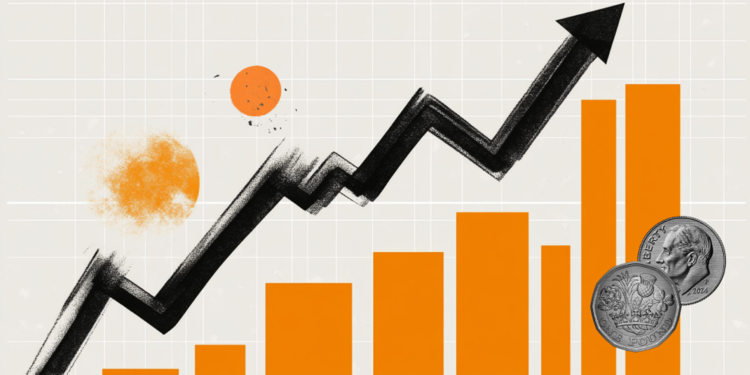The scenes of gigantic columns of smoke covering the skies of New York this year surprised the world by the strong images and the unusual situation. The reason for the chaos that took over this and several other cities in the United States such as Chicago, Detroit and Boston had an external origin, the terrible and uncontrollable forest fires in Canada. And recent scientific research points out that, thanks to climate change, phenomena like these will not only be more frequent but more intense, generating a wave of catastrophic consequences in different parts of the world.
When talking about polluted skies, people rarely associate this image with the vibrant North American metropolis or the charming European capitals, such as Paris, Vienna or Madrid. However, all these regions are more likely to suffer from climate impacts generated not only in their own countries but also in distant regions. The problems, which intensified as of April, brought problems again last Friday (14).
The smoke that caused such inconvenience to the US, by the way, ended up reaching Europe, in a demonstration that all environmental protection actions are no longer measures aimed at benefiting one or more countries, but have become a totally globalized issue.
A study released by the United Nations Environmental Program (Unep, its acronym in English) shows the real impact of climate change not only on the increase in cases but also on the greater impact that each occurrence generates.
Since the second industrial revolution (1850-1900), the planet has experienced a long-term warming trend, with an estimated increase in global mean surface temperature of 1.09°C. However, some areas experienced warming above this rate, reaching as much as 1.59°C. In the Arctic, temperatures rose more than twice as fast as average.
“The review of 116 articles written since 2013 on climate change and fire concluded that there is a strong consensus that climate change is increasing the likelihood of fire occurrence in many regions”, points out the study.
“The direct impacts of climate change on fire behavior are already apparent (…) and are the dominant drivers of fire regime change in much of the world, in tropical and boreal forests”, points out the report, highlighting that conditions amplify the potential to cause fires “out of control and for prolonged periods”.
“These impacts include changes in prevailing weather patterns during the fire season, resulting in periods of reduced rainfall and relative humidity, extreme air temperatures, and an increase in high winds.”
The UNEP research makes clear the chain of events that results in dramatic situations such as the column of smoke in the northeast of the United States – which made New York record the worst air quality in the world for one day: emission of pollutants resulting in global warming of the atmosphere, which results in climate deregulation, with more intense and lasting droughts and, consequently, uncontrolled fires.
“Warming has increased the frequency and magnitude of extreme weather conditions that drive the occurrence and spread of wildfires, (reaching) vegetation that would not normally burn in combustion (e.g. rainforests, permafrost and peat swamps)”, points out the lifting.
The study also provides detailed information on the dynamics: “Direct effects on fire climate through drought, higher temperatures and changes in wind strength and seasonality (…); changes in the frequency and location of natural and man-made ignitions through changes in dry lightning profiles.”
globalized impact
The consequences of the fires in Canada were visibly heavy for the United States. For Europe, the effects are not as visually impactful, but just as dangerous. When crossing the Atlantic Ocean towards the European continent, the column of smoke dispersed, but the elements harmful to health were not blocked. “The intensity and effects of smoke can still be significant. It is important to consider that smoke contains fine particles and harmful pollutants, which can affect air quality and human and pet health, even to a lesser extent”, explains Bruno Mena Cadorin, PhD in Chemistry and CEO of the company WIER.
He points out that among the elements contained in smoke that can result in damage to health are toxic chemical compounds such as carbon monoxide, nitrogen dioxide and sulfur dioxide, among others, and polycyclic aromatic hydrocarbons. These air pollutants can have adverse effects on human and animal health, causing lung damage, eye and respiratory system irritation, and contributing to global warming and air pollution. It is essential to avoid exposure to these harmful elements during a forest fire, both for you and your pets.
Cadorin also recalls the prolonged impacts on the ecosystem, radically harming the well-being of people and animals. “Habitat loss also affects biodiversity, reducing the variety of species present in the region. In short, forest fires do represent a serious threat to living beings and to the health of ecosystems”.
The connection between the wildfires in Canada and their harmful effects in other countries has long been pointed out by environmentalists. One of the points always mentioned is that most of the forests affected by fires are the result of reforestation and that these artificial biomes are more susceptible to fire.
“They generate greater impact when hit (by fire). Incidentally, they are more subject to fires,” explains Roberto Gonzalez, environmentalist and corporate governance and ESG consultant.

He also highlights the damage caused by fires to soil and water. “Forests take longer to recover, regrow and absorb their own carbon dioxide, amplifying a climate problem in the world”.
Marcus Nakagawa, professor and coordinator of the ESPM Center for Socio-environmental Development, also highlights the vicious circle caused by global warming and its consequences, which end up amplifying the climate crisis.
“The environmental impact of any fire, not just at the local level, is the issue of carbon emissions, which ends up causing the climate emergency. This ends up increasing the country’s emissions.”
It reinforces the need for transnational discussions to create stricter environmental rules. “It is necessary to create public policies based on all the agreements that are already being made, so that we can evolve further within the governance system of these countries”.
economic problem
The economic problems caused by the smoke cloud in the United States were not negligible. Several activities had to be interrupted, impacting the routine and dynamics of several cities, especially in the Midwest and Northeast region.
The logistics chain also suffered from the action of smoke clouds. Last-stage operations, where parcels are delivered to final recipients, saw sharp declines in performance in cities such as New York and Philadelphia.
In New York, for example, the on-time delivery index dropped from 84% to 70% between June 12th and 13th, according to data from project44, a provider of visibility technologies for the supply chain.
Week after the most critical moment, the indices again exceeded 80%, considered good. “There is, however, the fear that a new drop in performance will be identified in the coming days, as happened previously”, comments Pierre Jacquin, vice president for Latin America at project44.

The punctuality of cargo transport by trucks in the North East of the United States showed a slight drop throughout June, but remains at an index considered satisfactory, of 75%. “Smoke from large fires is an obvious concern with air transport, but cargo transport by plane is predominantly done to respond to emergencies. Road transport, however, is the one that tends to be harmed the most. As trucks typically travel longer distances, they are more susceptible to weather-related slowdowns,” says Jacquin.
Health care
The major problem for the population affected by smoke is the prolonged action of harmful agents. In the case of the United States, the large columns of smoke remained in cities for several days. In other countries, the problem is similar and there is already talk of the risks that Brazilians may be exposed to in the coming weeks, with the intensification of droughts.
“These respiratory problems will be more serious the longer the time of exposure to smoke and the greater the intensity, concentration and toxicity of the inhaled smoke composition”, explains Luis Carlos Losso, pulmonologist at Hospital Edmundo Vasconcelos. “Inhalation can produce various effects on the lungs such as irritation of the airways, lung inflammation, respiratory infections and the aggravation of pre-existing lung conditions.”
He recommends seeking medical assistance as soon as you register symptoms such as difficulty breathing and more intense coughing.
Caroline Reigada, a nephrologist and specialist in Internal Medicine for the Irmandade da Santa Casa de Misericórdia de São Paulo, highlights the risks of exposure to smoke for children. “They have a reduced ability to expectorate and their nasal filter is less efficient. In addition, they have a greater tidal volume per body weight (which is the volume of air that enters and exits the lungs), generating a greater accumulation of these substances in their lungs”.
The consequences of contact with inhaled toxic materials can last a lifetime, as the lungs only finish developing at age 20.
The doctor also points out that prolonged exposure can increase the chances of acquiring cancer.
“Polycyclic aromatic hydrocarbons (HAC) are highly carcinogenic and can cause brain and lung tumors, with an increase of 10% more risk of this cancer, compared to the general population”. Also, in the long term, people who live around forested areas tend to have other disorders. “More mental illnesses, such as post-traumatic stress disorder, depression and insomnia, due to the loss of their properties and the need for urgent displacement”, he explains.
Source: CNN Brasil
Bruce Belcher is a seasoned author with over 5 years of experience in world news. He writes for online news websites and provides in-depth analysis on the world stock market. Bruce is known for his insightful perspectives and commitment to keeping the public informed.







